Nestled along the sun-kissed shores of Vietnam's southeastern coast, Mui Ne Market is not just a shopping destination; it's an experience woven into the fabric of local culture. Located strategically on Huynh Thuc Khang Street in the bustling coastal town of Mui Ne, this vibrant marketplace serves as a focal point for both locals and travelers alike. Here, the aroma of fresh produce mingles with the salty breeze from the nearby sea, crafting an atmosphere that encapsulates the essence of Vietnamese daily life. The market is a sensory feast – from the vibrant colors of tropical fruits to the lively banter exchanged between vendors and customers, every corner invites exploration. As you wander through the stalls, you can find an array of goods: local crafts, seafood, textiles, and an abundance of fresh produce. Each visit to Mui Ne Market is a chance not only to shop but to connect with the local community, indulge in culinary delights, and savor the lively spirit of this coastal town.
Mui Ne Market stands out as a treasure trove of local culture and commerce, offering visitors a glimpse into the daily lives of the local residents. It's a place where the hustle and bustle of trading create a symphony that resonates through the air. Just as a painter blends colors on a canvas, the market brings together diverse products and people, creating a vivid tapestry of experiences. Vendors display their wares with pride, showcasing the rich heritage of Mui Ne through fresh seafood, handicrafts, clothing, and more. A visit here is not merely about buying; it's about immersion – an opportunity to step into the heart of the community, feel the pulse of daily life, and witness firsthand the labor and love poured into everything from freshly caught fish to handmade textiles.
The market's charm lies in its accessibility and vibrancy. Positioned near key local attractions like the Fishing Village, the market is easily accessible for travelers staying in the area. The contrast between modern commercial shops and traditional market stalls creates an engaging dynamic that mirrors the broader shifts occurring within Vietnamese society. Tourists and locals alike wander through the aisles, each interaction enhancing the sense of community that makes the market a beloved gathering place. Thus, Mui Ne Market is not just a shopping venue; it is a cultural hub that showcases the lives, livelihoods, and stories of those who inhabit this beautiful coastal region.
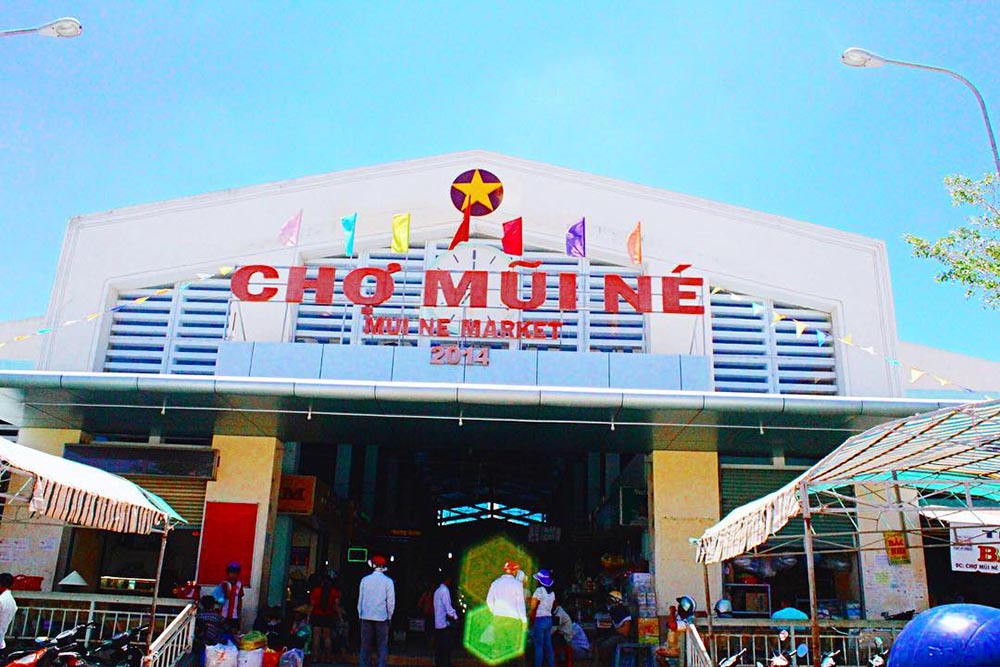
Located on Huynh Thuc Khang Street in Mui Ne, the market enjoys a prime position within this picturesque coastal town. Its strategic location makes it incredibly accessible for tourists and locals. A 15-minute drive from Phan Thiet city center leads directly to the market, making it a convenient stop for visitors exploring the region. As you approach, the vibrant colors of the market beckon you to explore further, promising an array of engaging sights and sounds.
Additionally, public transportation options, such as local buses and taxis, make reaching Mui Ne Market easy for anyone looking to experience a day of shopping. Alternatively, many visitors opt to rent motorbikes or bicycles to navigate the town at their own pace. The market's proximity to popular attractions, such as the Mui Ne Fishing Village and picturesque sand dunes, allows for a multifaceted day out that combines shopping with sightseeing.
The accessibility of Mui Ne Market enhances its appeal as a go-to destination for tourists. However, what truly defines the market is not just its location, but the vibrant atmosphere that surrounds it. The dynamic hustle and bustle create a sense of urgency that entices shoppers to delve into each stall, exploring the variety of goods on offer. Whether purchasing fresh ingredients for a home-cooked meal or seeking unique souvenirs, visitors to Mui Ne Market experience a dynamic blend of convenience and cultural immersion.
Operating hours at Mui Ne Market typically start early in the morning, with vendors setting up their stalls around 5:00 AM. This early opening is crucial for both locals and tourists, as the freshest produce and seafood are available during these hours. As the sun rises, the market comes alive, bursting with energy as vendors proudly display their goods, call out prices, and negotiate deals. Shoppers looking to experience the full vibrancy of the market are encouraged to visit in the morning, when the air is filled with the enticing aroma of fresh bread, ripe fruits, and sizzling street food.
The market typically operates until late afternoon, closing around 6:00 PM. Throughout the day, the entire atmosphere remains lively and engaging, with vendors’ voices rising above the picturesque backdrop of colorful stalls. During the peak hours, the marketplace transforms into a buzzing hub of activity, brimming with locals engaging in their daily shopping routines and tourists eager to explore.
As you navigate through the market, you experience the vibrant soundscape – the laughter of children, the rhythmic call of vendors, and the sizzling sounds of street food being prepared. The vibrant colors of fresh fruits and vegetables create a visual feast that captivates the eye. Men and women haggle skillfully over prices, their animated bargaining showcasing a traditional aspect of Vietnamese commerce. The mixture of sounds, sights, and the aromas of fresh ingredients form an immersive environment that captures the essence of local life.
The atmosphere at Mui Ne Market reflects not only the community's trading habits but also its social dynamics. It's a place where stories are shared, friendships are forged, and local traditions are preserved, making every visit to the market a unique and enriching experience. This vibrant ambiance stands in stark contrast to typical shopping malls, where the focus often leans heavily on consumerism rather than cultural exchange.
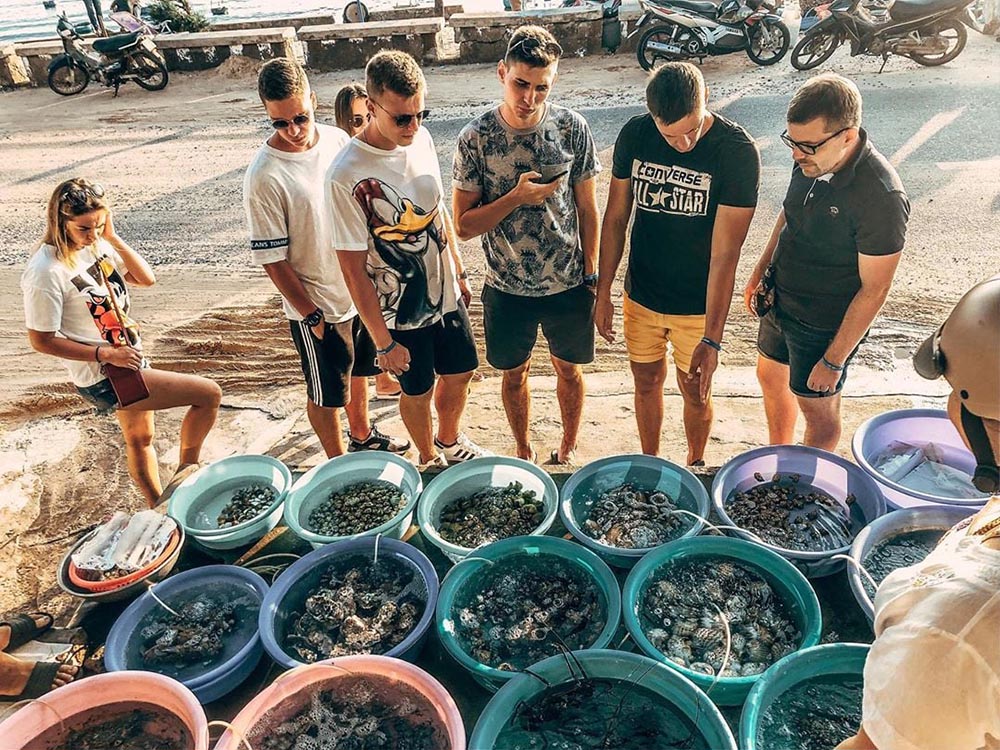
At Mui Ne Market, the diversity of products available for purchase captures the essence of Vietnamese culture and daily life. The market is a treasure trove, brimming with an impressive selection of goods that cater to both locals and tourists. Each stall showcases items that reflect the rich agricultural heritage of the region, as well as the vibrant art scene that thrives in this coastal town.
Fresh Produce: One of the primary attractions of Mui Ne Market is undoubtedly its extensive selection of fresh fruits and vegetables. Shoppers can find an array of local specialties, such as juicy dragon fruit, sweet lychee, and aromatic basil. Seasonal produce also graces the stalls, allowing visitors to sample unique flavors that can only be found in Mui Ne.
Seafood: Given its coastal location, seafood is a highlight of this market. Vendors proudly display their catches, from succulent shrimps to sizable crabs and various types of fish. The availability of freshly caught seafood at reasonable prices is a significant draw for both cooking enthusiasts and those looking to enjoy local dishes at home.
Clothing and Textiles: The market is also a hub for clothing and textile sales, where traditional Vietnamese garments like ao dai can frequently be found. Beachwear, casual attire, and custom-made clothing are also popular offerings, making this a convenient place to pick up something new for your next beach outing.
Souvenirs and Handicrafts: Tourists will find an array of souvenirs, from intricate handicrafts to practical items that serve as reminders of their visit. Vendors sell traditional ceramic wares, woven textiles, and locally produced art, making it easy for visitors to take home a piece of Mui Ne's vibrant culture.
Street Food: Last but certainly not least, the market features a selection of mouthwatering street food. Stalls offer local delights such as banh can (mini pancakes), banh xeo (Vietnamese pancakes), and various seafood dishes that invite you to indulge in the flavors of Mui Ne. The convenience of sampling delicious dishes while shopping elevates the overall experience, allowing for sightseeing and gastronomy to coexist harmoniously.
Altogether, the wide variety of products available at Mui Ne Market provides an engaging shopping experience. Each visit allows for exploration and discovery of the local culture through food, crafts, and textiles, affirming the market's role as a cultural centerpiece in this coastal community.
In the heart of Mui Ne Market, fresh produce reigns supreme, drawing both locals and tourists alike with its vibrant displays and enticing aromas. The arrangement of fruits and vegetables comes together as a painter's palette a feast for the eyes that beckons shoppers to explore. Each stall offers a bounty of seasonal delights, reflecting the rich agricultural tapestry of the region.
Tropical fruits play a prominent role at the market. Dragon fruit, with its striking pink skin and speckled white interior, stands out among piles of lush lychee and sweet mangoes. The vibrant colors not only catch the eye but also signal the peak ripeness of these locally grown treasures. Many vendors are eager to share their knowledge about how to select the best fruits, often offering samples to entice potential buyers.
The vegetable offerings are equally impressive, showcasing an array of leafy greens, cucumbers, and bell peppers that highlight the freshness of local agriculture. Local staples like lemongrass and ginger are essential components of Vietnamese cuisine and can be found in abundance throughout the market. The ability to purchase fresh ingredients directly from local farmers connects shoppers to the source of their food, adding an additional layer of authenticity to the shopping experience.
One of the significant draws of the fresh produce at Mui Ne Market is its affordability. Prices are noticeably lower compared to supermarkets, and shoppers often enjoy the thrill of bargaining for better deals. This not only fosters a sense of camaraderie between vendors and customers but allows for the preservation of cultural practices that have defined Vietnamese marketplaces for generations.
Local foods also play a vital role in the experience at Mui Ne Market. Visitors can find ingredients for many traditional dishes, such as pho and banh xeo. Additionally, many vendors offer pre-prepared local dishes that can be purchased and enjoyed on the go. The combination of fresh produce, local culinary ingredients, and the enticing aromas that permeate the air creates a riveting environment, making the market a must-visit for gastronomes and casual shoppers alike.
Overall, the focus on fresh produce and local foods at Mui Ne Market emphasizes the region's agricultural richness and culinary heritage. Visitors leave with more than just products; they gain a deeper understanding of the vibrant community that thrives on the shores of Mui Ne and the role that food plays in connecting people to their culture and traditions.
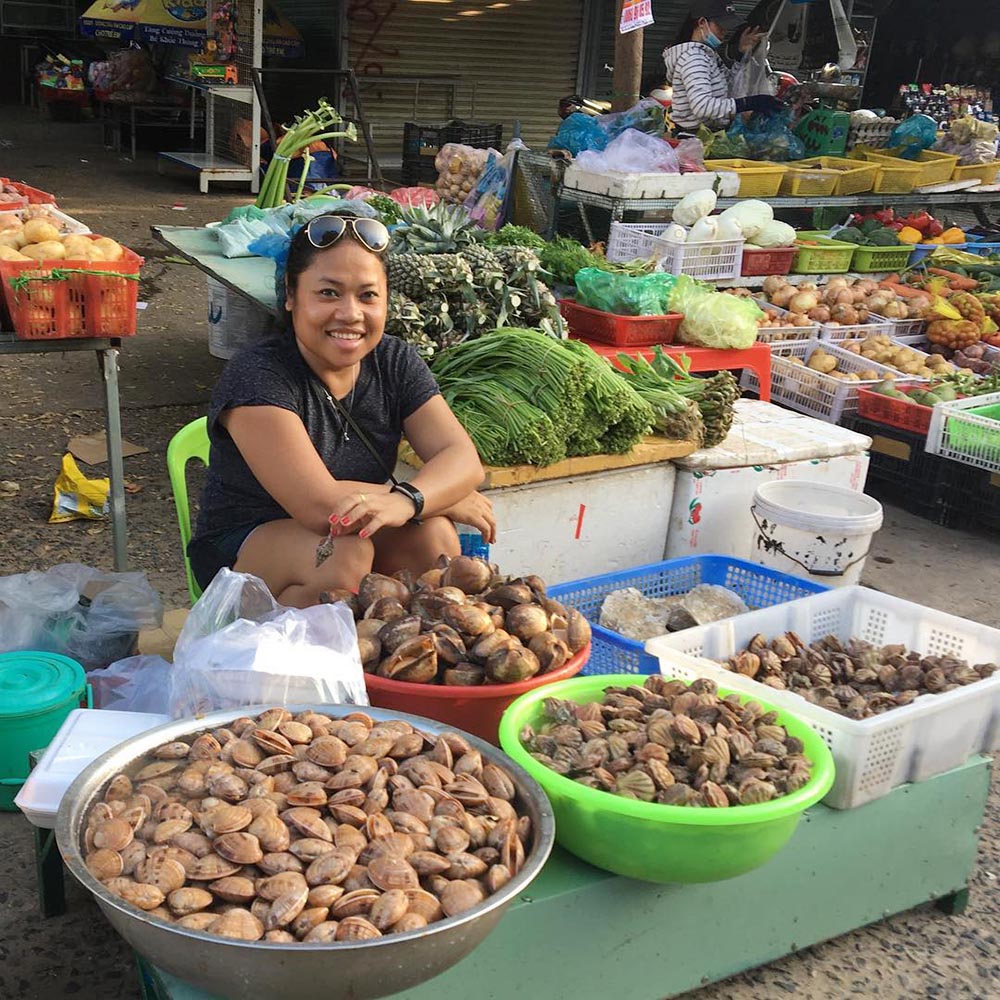
Mui Ne Market is synonymous with fresh seafood, a true testament to the fishing heritage of this coastal town. With the ocean just a stone's throw away, the market serves as a direct conduit between local fishermen and consumers. As you approach, the salinity of the sea mingling with the enticing aromas of freshly caught fish fills the air, creating an irresistible invitation to explore further.
Local fishermen, often up as early as dawn, deliver their daily catches directly to the market, ensuring that only the freshest seafood is available. Stalls brimming with a variety of fish, including snapper, grouper, and mackerel, line the aisles, each vendor eager to showcase their best products. The fish offered here are not just any fish; they reflect the unique marine ecosystem of the region and are often sold at remarkably affordable prices compared to upscale restaurants.
Beyond fish, the market features an extensive selection of shellfish and crustaceans that are sure to delight any seafood enthusiast. You can find plump crabs, succulent shrimp, and a variety of mollusks available for purchase. Vendors are often happy to engage in conversation, sharing tips on the best cooking methods or offering samples of freshly cooked seafood dishes. This closeness to the source cultivates a sense of community and connection that enhances the shopping experience.
The cultural significance of seafood extends beyond mere food; it forms the backbone of many local delicacies. Visitors can discover the ingredients to iconic Vietnamese dishes like seafood hotpots or grilled fish, which often feature fresh herbs and spices unique to the region. Sample dishes from various stalls, including fish wrapped in banana leaves or crispy fried squid, showcasing the creativity and flavors that characterize local cuisine.
The experience of purchasing seafood at Mui Ne Market goes beyond just selecting items; it is about participating in a tradition that has shaped the livelihoods of generations. As shoppers haggle for prices or engage in conversation with vendors, the vibrant camaraderie that fills the air creates an authentic environment. It’s not unusual to see locals sharing recipes or negotiating a price while savouring the flavors of freshly prepared dishes right at the market.
In essence, the seafood available at Mui Ne Market embodies the richness of the surrounding waters, showcasing the culinary culture that has flourished here for decades. For anyone visiting Mui Ne, the opportunity to experience fresh seafood in an authentic setting adds layers of flavor and culture, transforming shopping into much more than a transactional exchange.
In a market as vibrant as Mui Ne, shopping for clothing and souvenirs provides an opportunity to capture the essence of local culture while also taking home a piece of Vietnam. As you explore the colorful stalls, the variety of offerings is as diverse as the people who populate the market. Traditional garments, beachwear, and unique souvenirs crowd the spaces, presenting endless options for visitors.
Traditional Garments: Among the offerings, you'll find beautifully crafted traditional Vietnamese clothing, including the iconic ao dai a graceful dress that embodies Vietnamese culture. Stalls dedicated to textiles showcase intricate patterns and vibrant fabrics, allowing for a personalized shopping experience where custom fittings are often available.
Beach Wear and Casual Attire: Given the coastal location, beachwear is abundant. From swimsuits and sarongs to lightweight cover-ups, shoppers can find everything needed for days spent soaking up the sun on Mui Ne’s beautiful beaches. Casual attire, such as t-shirts and shorts designed for the laid-back lifestyle, is also widely available.
Souvenirs and Handcrafted Goods: The market is a trove of souvenirs, allowing tourists to bring home unique mementos. Handcrafted items, such as ceramics, wooden crafts, and intricately woven textiles, provide insight into local artistry and craftsmanship. Unique items like traditional jewelry or hand-painted artworks can also be found, making for unforgettable gifts.
Local Art: Local artists often set up stalls, showcasing their creations, which may include anything from paintings depicting life in Mui Ne to contemporary art pieces representing Vietnamese culture. Buying art from local creators not only enriches your collection but also supports the community.
Shopping for clothing and souvenirs at Mui Ne Market is more than a casual affair; it is an opportunity to engage with the essence of Vietnamese culture while supporting local artisans and their livelihoods. Each piece you acquire tells a story, reflecting the traditions and values of the community.
In essence, the clothing and souvenir options at Mui Ne Market bridge the gap between commerce and culture, ensuring that visitors leave not only with unique items but with memories rich in cultural significance.
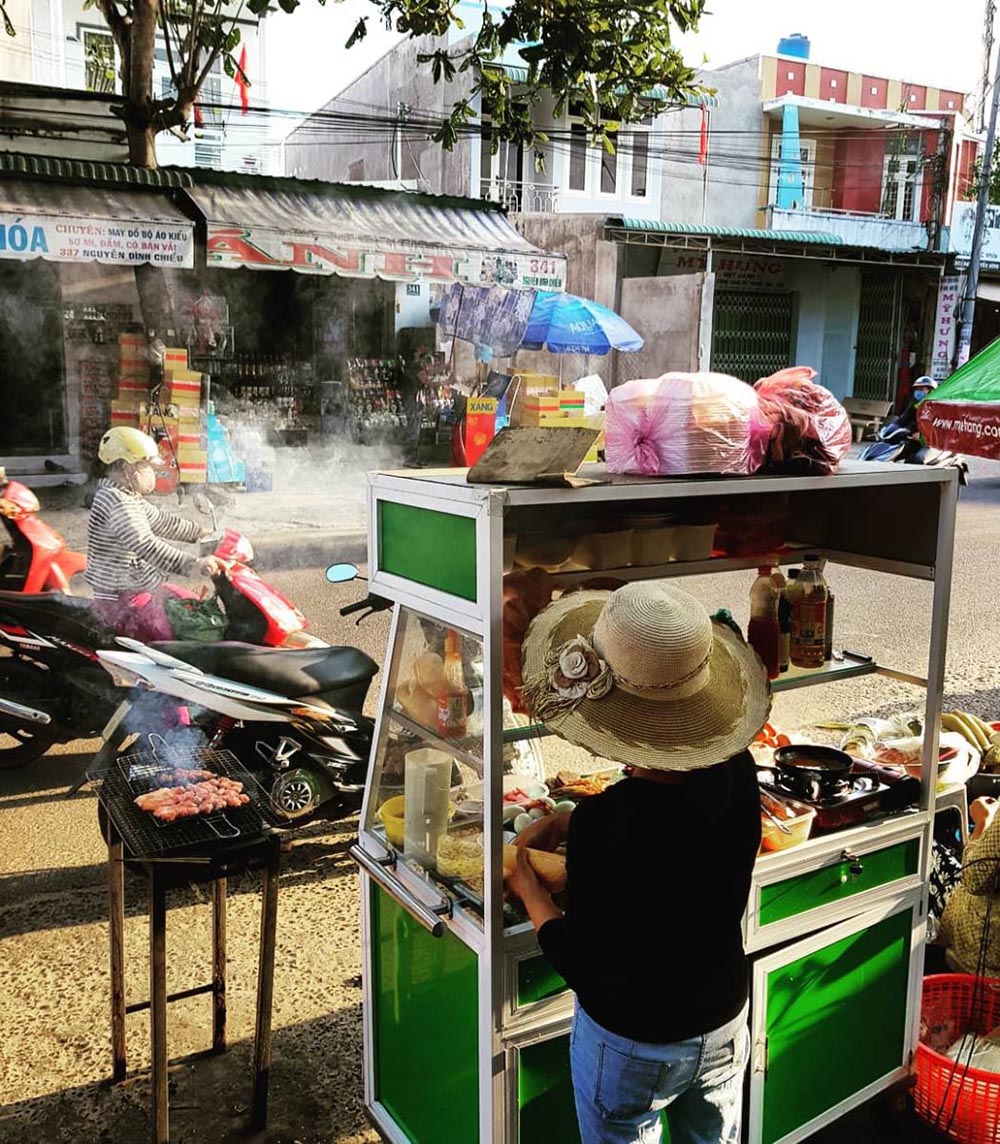
One of the most distinctive features of Mui Ne Market is its impressive selection of handicrafts and local art, providing an avenue for visitors to immerse themselves in the region's creativity and tradition. As you stroll through the market, you're greeted by a kaleidoscope of colors and textures, each stall offering a unique artisan perspective that celebrates Vietnamese culture.
Handwoven Textiles: Traditional craftspeople present exquisite handwoven textiles that showcase intricate designs and rich cultural narratives. Popular items include colorful scarves and tapestries that embody the artistry of local weavers. The labor-intensive process of creating these textiles reflects not only skill but also a commitment to preserving Vietnam's textile heritage.
Bamboo and Rattan Goods: Eco-friendly and beautiful, bamboo and rattan goods are another hallmark of the market's handicrafts. From intricately woven baskets to decorative pieces, these items reflect the sustainable practices rooted in the community. Shoppers can acquire practical yet stylish goods while supporting environmentally conscious choices.
Ceramics and Pottery: Local artisans create stunning ceramics that range from functional dishware to decorative pottery. The craftsmanship involved in these pieces often tells the story of Vietnamese tradition, and visitors are encouraged to select items that resonate personally. Many artisans incorporate traditional motifs and designs, ensuring each piece is a distinctive work of art.
Local Art: Beyond handicrafts, the market proudly showcases local artists, many of whom set up stalls to sell their paintings and sculptures. From vibrant landscapes capturing the coastal beauty of Mui Ne to abstract interpretations of Vietnamese culture, this art gives visitors a window into the local artistic expression. Purchasing a piece directly from the artist fosters a direct connection to the cultural narrative and enhances appreciation for their work.
Supporting Local Talent: Purchasing handicrafts and local art directly from markets not only enriches individual collections but also has a profound impact on the community. By buying handmade items, visitors participate in sustaining local livelihoods and encouraging the continuation of artisanal crafts, many of which have been passed down through generations.
In conclusion, the handicrafts and local art found in Mui Ne Market encapsulate the spirit of Vietnamese creativity and craftsmanship, making for memorable keepsakes that reflect the local culture. Each item selected tells a story, opening a door to the rich heritage and enduring traditions of this coastal community.
When in Mui Ne, the enjoyment of shopping extends beyond the bustle of the marketplace to several popular shopping areas, each offering a unique blend of goods and experiences. Here are some noteworthy locations worth exploring:
Mui Ne Market: The heart of local shopping, Mui Ne Market is renowned for its vibrant atmosphere and extensive selection of goods. Expect to find fresh produce, seafood, textiles, clothing, and local handicrafts in this lively market. Visitors appreciate the variety and freshness of items available, making it an essential stop for culturally rich shopping experiences.
Ham Tien Market: Situated along Nguyen Dinh Chieu Street, Ham Tien Market focuses on both fresh and processed foods and offers a blend of clothing and souvenirs across its two floors. With a bustling energy and a warm atmosphere, bargaining is common here, and visitors can enjoy sampling local snacks while shopping.
Phan Thiet Central Market: As the largest market in Phan Thiet city, it offers an extensive selection of seafood, fresh fruits, and a variety of local delicacies. Predominantly operating in the mornings, it’s beneficial for immersing yourself in local culture while savoring traditional Vietnamese foods.
Kim Shop: Ideal for beachwear seekers, Kim Shop features popular brands like Roxy, Quiksilver, and Billabong at reasonable prices. Located in Ham Tien, this shop is perfect for tourists wanting to prepare for beach outings or simply refresh their summer wardrobe.
Asian Living: This shopping center specializes in high-quality silk scarves, swimwear, and accessories, all at affordable prices. The variety makes it a go-to stop for tourists in search of stylish souvenirs or fashion items.
Jibe’s: Famed for its focus on water sports, Jibe’s offers a range of products related to kite surfing and windsurfing. It combines shopping with adventure, attracting tourists who want both gear and experiences.
These vibrant shopping areas in Mui Ne satisfy a diverse array of preferences, catering to those looking for fresh produce, local handicrafts, beachwear, and unique cultural souvenirs. Engaging with the local shopping scene provides visitors with a holistic experience of the town's culture and community spirit.
Mui Ne Market stands as the centerpiece of shopping in this coastal town, pulsating with life and offering a true immersion into the local culture. As you step into the market, the vibrant colors and lively atmosphere create an enchanting backdrop for exploring the goods on display. Fresh produce fills stalls, while vendors enthusiastically call out prices, enticing visitors to browse their wares.
This market showcases a rich selection of items, from locally sourced fruits and vegetables to freshly caught seafood. Just as a mosaic comprises different pieces, each stall at Mui Ne Market plays its role in painting a picture of the community's daily life. The close-knit camaraderie between vendors and buyers adds warmth to the shopping experience; familiar faces greet returning customers, and stories are exchanged among strangers.
In addition to fresh goods, the market stalls overflow with clothing and handicrafts, allowing shoppers to discover unique souvenirs that represent Mui Ne's culture and heritage. The vibrant textiles and locally produced art showcase the creativity and craftsmanship of the region, making it the perfect place for visitors to gather mementos of their travels.
At Mui Ne Market, the principles of bargaining come alive. Each transaction is an interaction filled with laughter and negotiation, guided by the understanding that each party wants a fair deal. This vibrant atmosphere contrasts sharply with the sterile feel of modern retail stores, highlighting the beauty of commercial tradition deeply rooted in Vietnamese culture.
The market is not merely a shopping destination; it is a cultural experience that weaves together the personal narratives of sellers and buyers alike. Connecting with local traditions and savoring authentic Vietnamese flavors allows visitors to appreciate Mui Ne beyond its picturesque scenery.
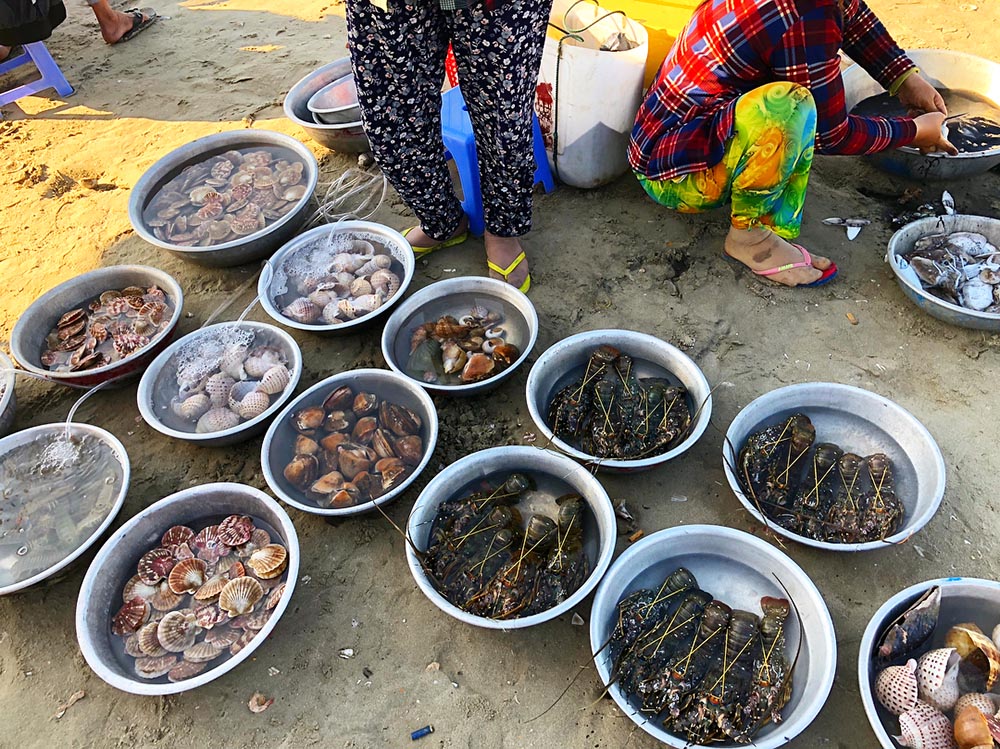
The Fishing Village Market near Mui Ne is an essential destination for seafood enthusiasts, offering an authentic experience that reflects the thriving fishing culture of the community. Here, early morning visits reveal a tableau of local fishermen unloading their fresh catches from colorful round basket boats. The market buzzes with energy, drawing both locals and tourists eager to explore the day's offerings.
At this market, stalls overflow with an enticing array of seafood choices: from shimmering mackerel and tender squid to robust crabs and succulent shrimp. The freshness of the seafood is unparalleled, and buyers can often engage in discussions about the best preparation methods with the vendors. The sense of camaraderie permeating the market invites shoppers to learn more about the traditional fishing methods and stories woven into the community fabric.
The authentic experience extends beyond mere shopping; the Fishing Village Market fosters a sense of connection between consumers and producers. As locals gather to buy their daily provisions, the air is filled with the palpable sense of community, one that exemplifies the rhythmic ebb and flow of life along the coast.
The vendor's warm smiles and willingness to share their expertise enrich the shopping experience. Visitors can often sample dishes prepared on-site, leading to culinary explorations that introduce unique local flavors. In this market, food transcends being just a meal; it evolves into a shared story of heritage and home.
The Fishing Village Market is a gem in the broader shopping landscape of Mui Ne, providing an immersive encounter with the region’s maritime roots and culinary culture. Shoppers leave not only with fresh seafood but also with lasting memories of the vibrant community spirit fostering this inviting and authentic marketplace.
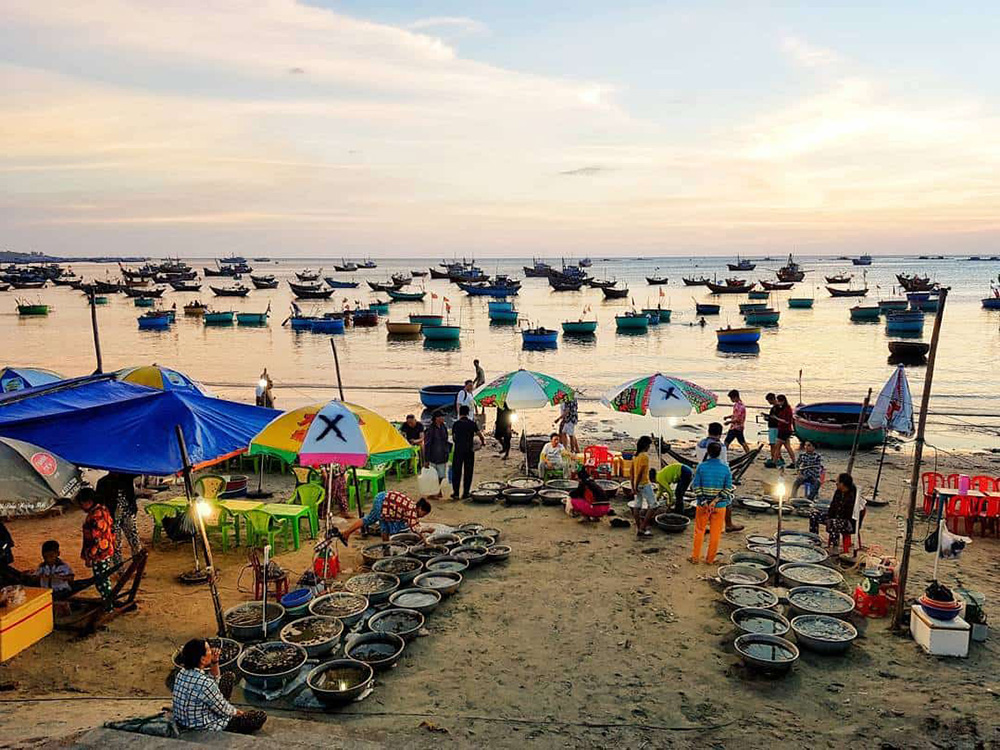
Nguyen Dinh Chieu Street is a bustling hub of activity in Mui Ne, famous for its specialty shops that offer an array of unique items and experiences. This lively street serves as a gathering place for community interactions sprawled out before vibrant storefronts filled with enticing products. As you stroll along, you're enveloped in the lively atmosphere that captures the essence of coastal town life in Vietnam.
Among the many shops on Nguyen Dinh Chieu are those specializing in high-quality souvenirs, local handicrafts, and beachwear. Visitors can find boutiques offering everything from handmade ceramic goods, traditional Vietnamese art, to unique jewelry pieces that reflect the creativity of local artisans. Each item possesses its own story and connection to the rich heritage of the region.
The street is also characterized by a lively culinary scene. Many specialty shops serve as a gateway to experiencing local flavors, allowing visitors to sample beloved dishes like banh xeo or crispy spring rolls. As you indulge in these treats, the vibrant chatter and laughter of other patrons further enhance the experience, creating an atmosphere of camaraderie and joy.
A notable aspect of shopping along Nguyen Dinh Chieu is the engagement with local vendors. Individual shop owners often share stories about their products, providing insights into their craftsmanship and production processes. This personal touch distinguishes local shopping from mere consumerism, allowing visitors to form meaningful connections with the community.
Nguyen Dinh Chieu Street embodies the lively spirit of Mui Ne, balancing commerce with cultural exchange. Visitors can discover treasures that reflect the local lifestyle while engaging in conversations that enrich their understanding of Vietnamese culture. The specialty shops along this street uniquely contribute to the overall shopping landscape of Mui Ne, making it a must-visit for those seeking authentic experiences.
The markets of Mui Ne offer unique experiences that transcend traditional shopping encounters. Each market visit becomes a cultural journey, rich with flavors, interactions, and local customs that enhance the overall experience for visitors. Here, shopping intertwines with cultural exploration, inviting tourists to immerse themselves in the life of this coastal community and engage with its vibrant heritage.
Culinary Adventures: Beyond purchasing goods, the markets entice visitors with the promise of culinary adventures. From sizzling street food stalls to fresh seafood delicacies, each market offers an opportunity to savor local flavors. Sampling snacks as you browse adds a dynamic element to the shopping experience, allowing visitors to taste their way through the market while appreciating its offerings.
Cultural Interactions: Engaging with local vendors adds depth to the shopping experience. Many vendors are eager to share stories about their products and food, explaining the cultural significance behind the handicrafts, traditional garments, or local delicacies. These personal connections create a deeper understanding of穆读nouVielong with the items purchased.
Bargaining Practices: Embracing the art of bargaining adds an exciting dimension to market visits. Visitors can engage in friendly discussions over prices, which often leads to playful exchanges that foster a warm and welcoming atmosphere. This custom allows shoppers to feel more like part of the community, contributing to a sense of shared cultural appreciation.
Community Spirit: The bustling environment of the markets reflects the daily lives of local residents. Observing the bustling interactions among shoppers and vendors gives visitors insight into the community's rhythms and relationships. Whether it's watching children play nearby or listening to the banter of neighbors catching up, the sense of community envelops you.
Cultural Shopping as an Experience: For many, shopping in Mui Ne becomes a cultural experience. Instead of merely looking for souvenirs or supplies, visitors discover the richness of the local lifestyle. By participating in market life, shoppers encounter the traditions and values that define the community, creating lasting impressions beyond material purchases.
The markets of Mui Ne are not just places to buy; they are dynamic spaces that encapsulate the vibrancy of local culture. Engaging in cultural practices, savoring local dishes, and forging connections with vendors enhance the shopping experience, ensuring that visitors leave with not only bags of goods but also a deeper appreciation of the region's culture and community.
Bargaining is an integral part of the shopping experience in Mui Ne markets, adding an element of excitement and engagement to the purchasing process. Visitors are encouraged to embrace this practice while navigating the vibrant stalls filled with fresh produce, seafood, and handicrafts. Here are some effective bargaining techniques that can enhance interactions with local vendors:
Do Your Research: Before diving into negotiations, it’s helpful to have a general understanding of the item’s market value. Familiarizing yourself with common prices can empower you during discussions and ensure that you can identify fair deals.
Start Low: When making your first offer, begin with a price significantly lower than the asking price. This provides room for negotiation and allows you to adjust upward as needed. This approach often leads to playful banter, creating a friendly atmosphere.
Be Friendly and Polite: Establishing rapport with vendors can go a long way in securing favorable deals. A warm smile and a friendly greeting can help create a positive interaction, which can encourage vendors to be more flexible in their pricing.
Show Genuine Interest: Expressing curiosity about an item can entice vendors to lower prices. By showing your appreciation for their craft or unique offerings, you develop a connection that can facilitate better bargaining outcomes.
Be Prepared to Walk Away: If negotiations reach a stalemate, don’t hesitate to walk away. This can signal to vendors that you’re serious about your desired price, and many will call you back with improved offers to seal the deal.
Bundle for Discounts: If you are interested in multiple items, mention your intent to purchase more as a bargaining strategy. Vendors often appreciate bulk purchases and may offer special pricing, making it a win-win situation for both parties.
Bargaining is an art form that contributes to the vibrant atmosphere of Mui Ne markets. Visitors who engage cheerfully in this practice enhance their shopping experience while deepening their understanding of local traditions. Ultimately, the act of bargaining transforms transactions into interactions, allowing for connection and cultural exchange.
Interactions with local vendors in Mui Ne markets extend beyond mere transactions; they encompass cultural encounters that enrich the shopping experience. The bustling atmosphere provides ample opportunities for visitors to engage with the individuals behind the stalls, fostering connections that bring local culture to life.
Sharing Stories: Local vendors often take pride in their products and are eager to share stories about their craftsmanship and the cultural significance of their goods. Through conversations, visitors gain insights into the unique traditions that shape the market. A vendor selling handcrafted ceramics may share their family history in pottery-making, revealing a connection to the community's heritage.
Culinary Insights: In the seafood section, interactions can lead to culinary explorations. Vendors often recommend methods for preparing or cooking seafood, suggesting local dishes that highlight the flavors of Mui Ne. Sampling fresh catches can also encourage discussions about the best cooking techniques and pairings, bridging the gap between food preparation and enjoyment.
Negotiation and Friendly Banter: The bargaining process itself fosters camaraderie between shoppers and vendors. Playful negotiation can turn into lighthearted exchanges that build rapport. Humor often resonates in these interactions, creating memorable experiences that extend beyond commercial transactions.
Learning Cultural Practices: Visitors are often welcomed into the customs of the market through their interactions with vendors. Engaging in light conversation can lead to invitations to observe unique practices, such as traditional fish-cleaning methods or textile-weaving techniques. This participatory approach allows visitors to engage authentically with local traditions.
Building Trust: Establishing connections with vendors enhances the overall market experience. Many local sellers prioritize customer relationships and take the time to remember returning visitors. Familiarity can lead to better pricing or insider tips about the best times to visit or culinary delights to try.
Overall, interactions with local vendors in Mui Ne markets create an authentic cultural tapestry. These exchanges enrich the shopping experience, fostering a deeper appreciation for the community, its customs, and its vibrant spirit.
Visits to markets in Mui Ne provide a delightful gateway into the rich cultural tapestry of Vietnam. Beyond shopping, these experiences reveal the ingenious ways in which community, tradition, and commerce intertwine. Here are some insights into the cultural significance of these markets that enhance visitors' understanding of life in this coastal town.
Community Spirit: Markets function as communal gathering spaces, where locals converge to buy necessities and socialize. The hustle and bustle reflects a sense of belonging and connection among community members, highlighting the importance of social interaction in Vietnamese culture.
Culinary Traditions: The presence of fresh produce and seafood at the market reveals the significance of food in Vietnamese life. Much emphasis is placed on sourcing local ingredients, leading to a deep-rooted culture of cooking with fresh, seasonal products. Observing the interaction between vendors and customers can illuminate the culinary practices that define the region's cuisine.
Cultural Identity: The crafts and handicrafts found within the markets provide insight into the artistic heritage of the region. Items like textiles, ceramics, and traditional garments reflect local customs and artistry, offering a glimpse into the cultural identity that persists within the community. Many of these items are infused with symbolism and meaning, connecting buyers to history and traditions.
Intergenerational Knowledge: Many of the vendors at Mui Ne Market are steeped in knowledge passed down through generations. Engaging with these artisans allows visitors to witness the importance of preserving traditional practices. Each handmade item may carry its own story, offering shoppers a window into the skills and stories that have shaped local craftsmanship over time.
Market Rituals: The act of bargaining serves as a ritual within Vietnamese marketplaces, fostering interactions that embody cultural exchanges. This established practice shapes the way commerce is conducted, reflecting values of respect, tradition, and community. By participating in bargaining and vendor interactions, visitors engage with customs that define social dynamics in the market.
In essence, visits to the markets in Mui Ne go beyond simple transactions; they offer valuable cultural insights that enhance understanding not only of the products offered but also of the community's values, heritage, and way of life. Through engaging with local traditions and practices, visitors leave with a richer appreciation of Vietnamese culture.
Shopping in Mui Ne, particularly in its bustling markets, transcends conventional consumerism, evolving into a meaningful cultural experience that intertwines community, culinary heritage, and personal interaction. The markets serve as vibrant hubs where locals and visitors converge, sharing stories, exchanging goods, and celebrating the richness of Vietnamese culture. From the lively atmosphere and fresh local produce to unique handicrafts and culinary delights, each aspect contributes to a deeper understanding of the region's identity.
Visitors engage in cultural practices such as bargaining, gaining insight into the community's values and relationships. Friendly interactions with local vendors not only provide a glimpse into traditional skills and craftsmanship but foster connections that enhance the overall visit. Whether it's savoring ocean-fresh seafood or selecting handcrafted souvenirs, every shopping experience invites travelers to immerse themselves in the local narrative, transforming simple purchases into lasting memories.
Ultimately, the shopping experience in Mui Ne markets is not just about acquiring goods but about creating shared moments that reflect the heart of the community. Visitors emerge with an appreciation for the culture, the vibrancy of the market atmosphere, and the warmth of local hospitality a testament to the impactful nature of engaging with Vietnamese heritage.